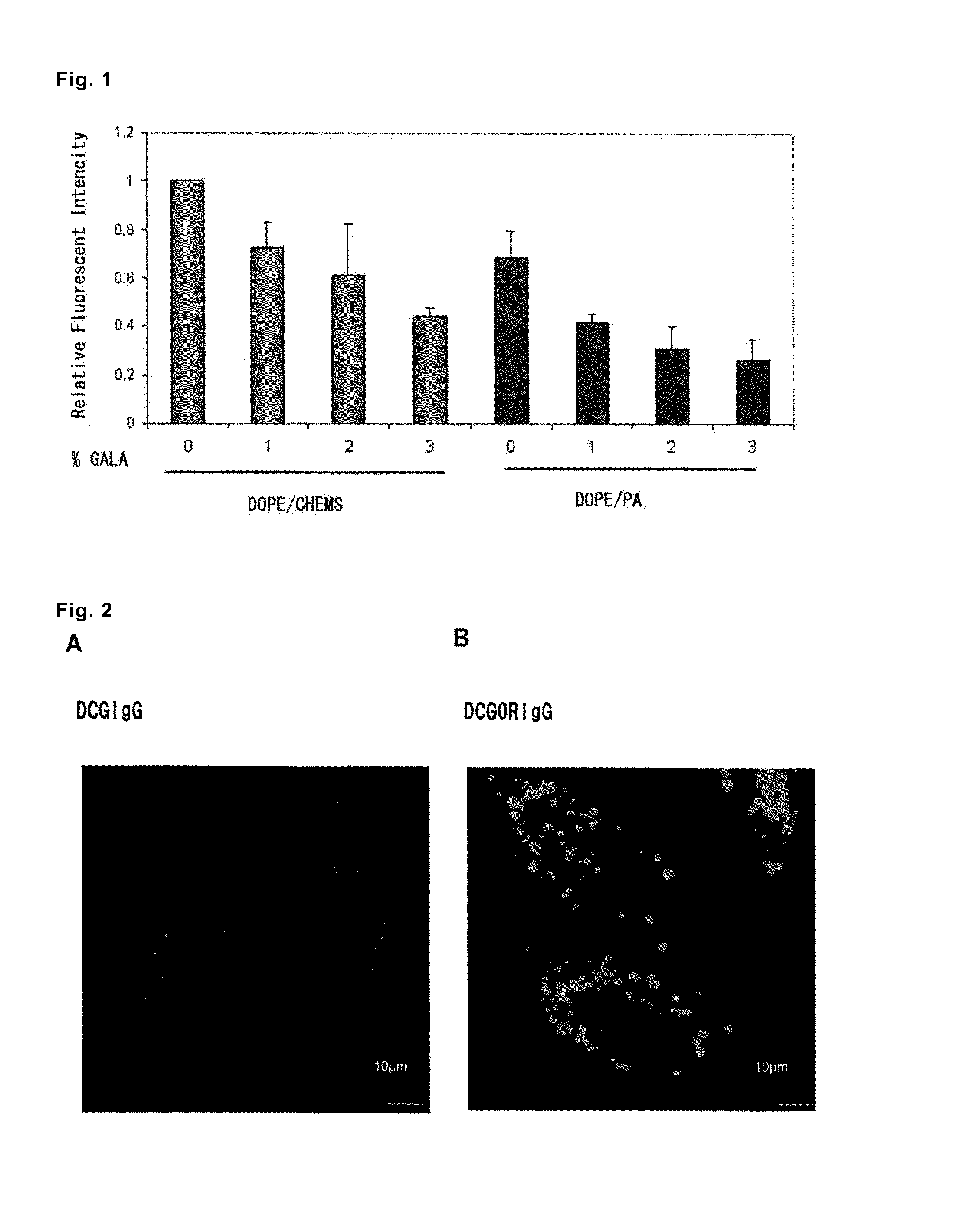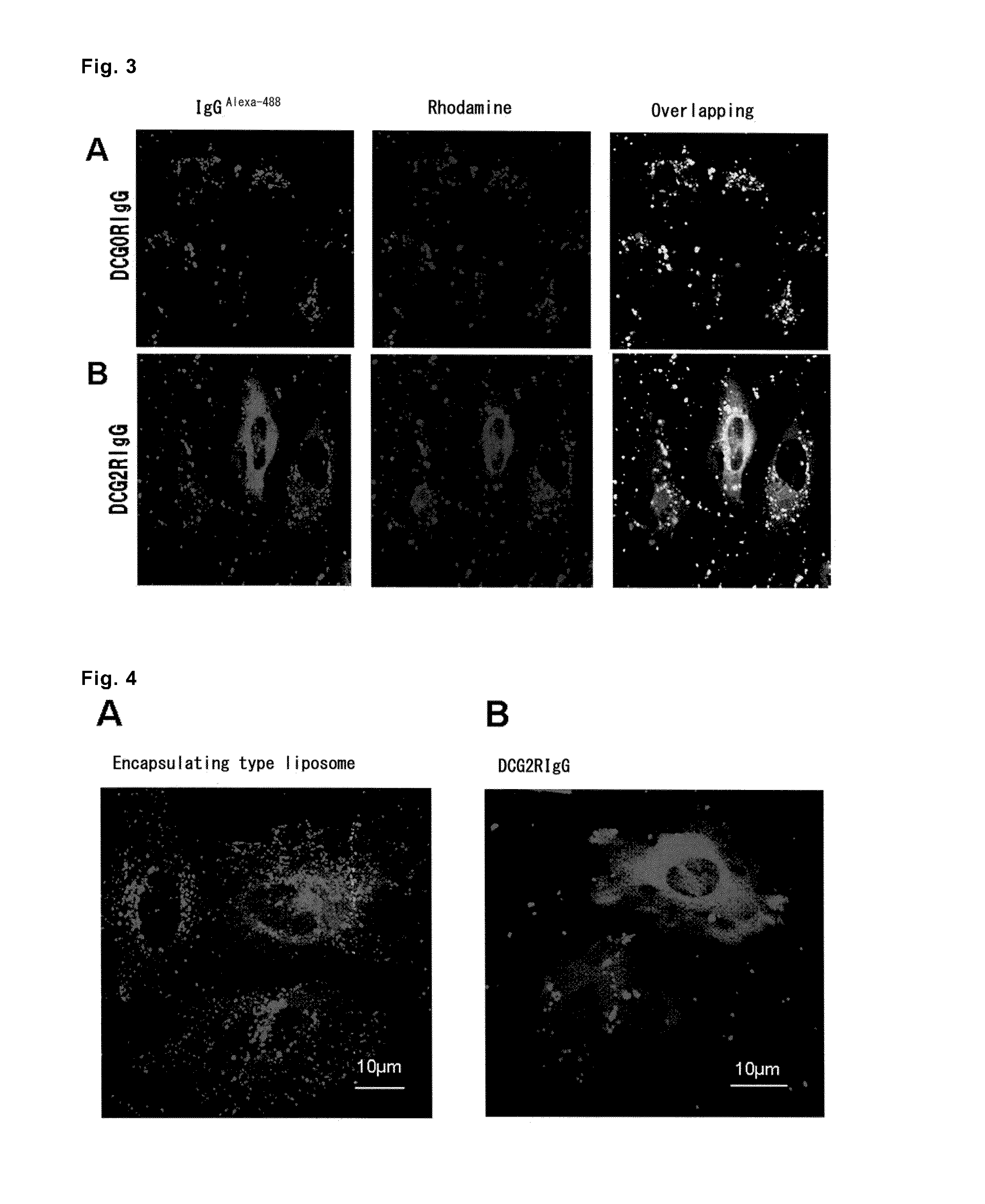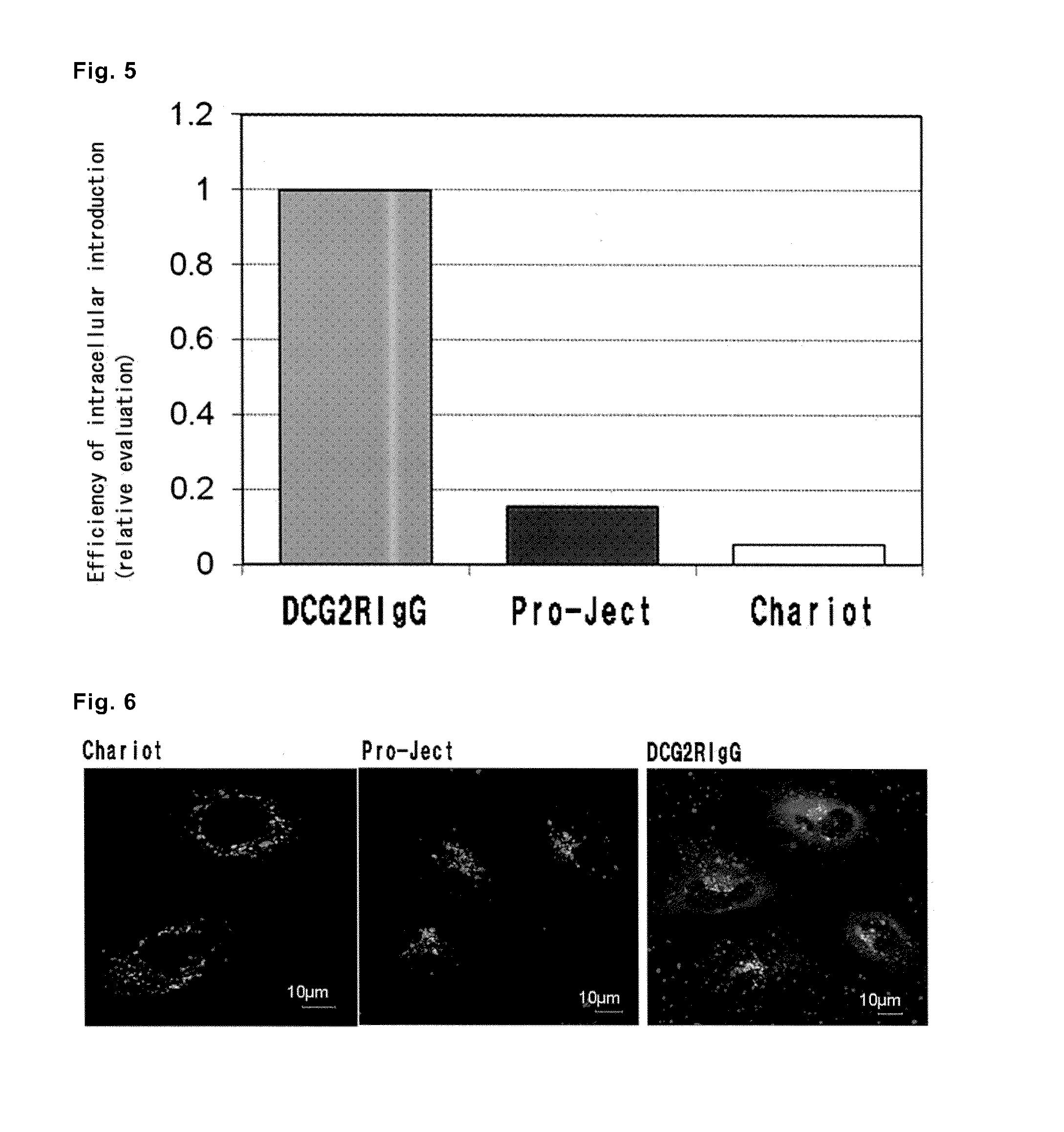Carrier for intracellular delivery of functional protein
a functional protein and carrier technology, applied in the direction of peptides, peptide/protein ingredients, antibody medical ingredients, etc., can solve the problems of chemical modification, insufficient escape of protein from the endosome to the cytoplasm, risk of changing the binding characteristics of antibodies, etc., to avoid inactivation of functional proteins, facilitate the preparation process, and facilitate the effect of delivery
- Summary
- Abstract
- Description
- Claims
- Application Information
AI Technical Summary
Benefits of technology
Problems solved by technology
Method used
Image
Examples
example 1
Preparation of Liposome Bonded with IgG Antibody
(1) Preparation of Carrier Liposome
[0074]According to the method described in Non-patent document 1 mentioned above, a C-terminus-amidated GALA peptide consisting of the amino acid sequence of SEQ ID NO: 1 was chemically synthesized by using a peptide synthesizer, purified, and then reacted with cholesterol to prepare cholesterylated GALA peptide (Chol-GALA). Similarly, according to the method described in Non-patent document 1 mentioned above, a C-terminus-amidated octarginine peptide (R8) consisting of eight arginine residues was chemically synthesized by using a peptide synthesizer, purified, and then reacted with stearic acid to prepare sterylated octarginine peptide (STR-R8).
[0075]DOPE / PA (molar ratio=9:2) modified with 0.55 mM rhodamine was put into four of glass test tubes, Chol-GALA was added to DOPE / PA so as to give a concentrations of 0 mol %, 1 mol %, 2 mol %, and 3 mol %, and a 1:1 mixture of ethanol and chloroform was furt...
example 2
Confirmation of Incorporation of Liposomes into HeLa Cells and Intracellular Localization of Antibodies
(1) Confirmation of Incorporation Efficiency
[0087]The liposomes prepared in Example 1, (2) (final concentration=6.25 μg / mL IgGAlexa488, D'MEM, FBS free) were added to 2×105 of HeLa cells in the D'MEM medium retained on a 6-well plate, and incubation was performed at 37° C. for 10, 15, 30, 45, 60, or 120 minutes. The cells were washed with a 20 U / mL cold heparin solution, then with the D'MEM medium containing FBS, and again with the 20 U / mL cold heparin solution. The washed cells were subjected to flow cytometry analysis using FACSan and CellQuest software (both are from Becton Dickinson). The analysis was performed in duplicate for 10,000 cells as the total cell count of each type of cells. The results are shown in FIG. 1.
[0088]It was observed that when the GALA peptide coexisted on the outer surface of the outermost lipid membrane, the efficiency for incorporation of the liposomes...
example 3
Comparison with Encapsulating Type Liposomes for Antibody-Releasing Ability
[0092]Liposomes encapsulating IgGAlexa488 (encapsulating type liposomes) were prepared in the same manner as that of Example 1, except that 250 μL of 10 mM HEPES buffer (pH 7.4) containing IgGAlexa488 was used in the hydration of Example 1, (1) instead of 250 μL of 10 mM HEPES buffer (pH 7.4).
[0093]According to the method described in Example 2(2), the encapsulating type liposomes were allowed to be incorporated into the HeLa cells, and intracellular localization of IgGAlexa488 was investigated. The results are shown in FIG. 4.
[0094]As shown in FIG. 4, when the encapsulating type liposomes were used, it was observed that most of fluorescence originating in IgGAlexa488 introduced into cells distributed in endosomes in a dot pattern (FIG. 4A). This result indicates that the antibodies enclosed in the encapsulating type liposomes were not released from the liposomes, but they remained to be trapped in the endoso...
PUM
| Property | Measurement | Unit |
|---|---|---|
| molecular weight | aaaaa | aaaaa |
| molecular weight | aaaaa | aaaaa |
| diameter | aaaaa | aaaaa |
Abstract
Description
Claims
Application Information
 Login to View More
Login to View More - R&D
- Intellectual Property
- Life Sciences
- Materials
- Tech Scout
- Unparalleled Data Quality
- Higher Quality Content
- 60% Fewer Hallucinations
Browse by: Latest US Patents, China's latest patents, Technical Efficacy Thesaurus, Application Domain, Technology Topic, Popular Technical Reports.
© 2025 PatSnap. All rights reserved.Legal|Privacy policy|Modern Slavery Act Transparency Statement|Sitemap|About US| Contact US: help@patsnap.com



